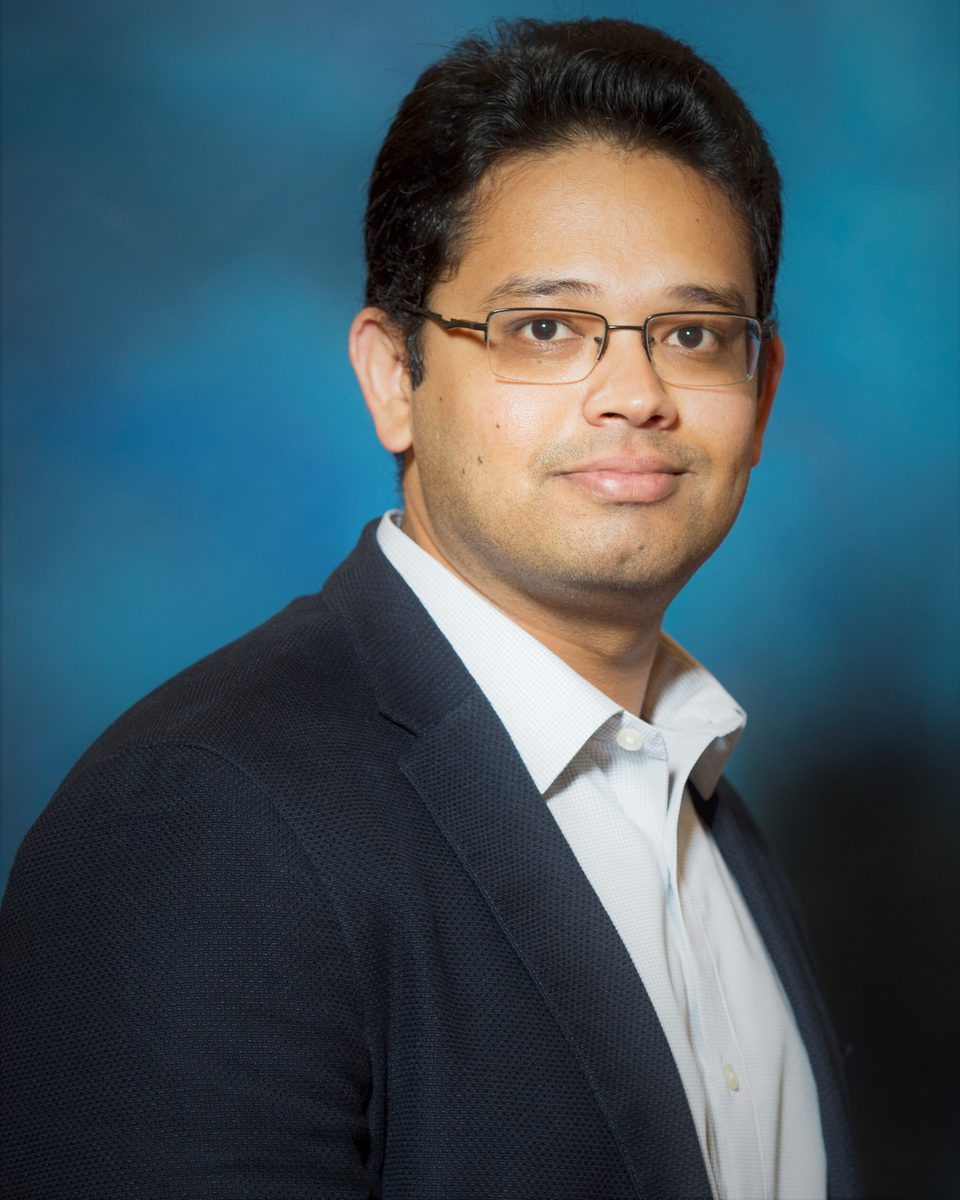Dr. Sravan Patel: Beyond the cutting edge - Research targets diagnostic, medical treatment for endometriosis

Growing up in his native India, Dr. Sravan Kumar Patel never knew what condition led to his maternal grandmother’s death — only that it involved her uterus. Whatever it was, her mother had suffered from it before her. As was the case with many women of her generation, women’s health problems were left undiagnosed — and, therefore, untreated, borne in silence until it was too late.
“Nobody knew about it, because she didn’t seek help,” recalls Dr. Patel, now an investigator at Magee-Womens Research Institute. Even today, when he asks his own mother to stay vigilant with regular checkups, she is reluctant to see a doctor.
“Women don’t talk about (their health problems) much. Most of the time, their interactions with doctors would be in pregnancy,” Dr. Patel notes. “That gave me a perspective of how differently we perceive (symptoms) … there is a specific population whose needs are much more than what the general population needs are.”
Today, a key focus of Dr. Patel’s research targets endometriosis — one of the most persistently undiagnosed and understudied women’s health problems in our culture.
As common as asthma, endometriosis is, nonetheless, a disease with an alarmingly slow diagnosis rate; women can wait eight to 11 years for answers, often while enduring pain so debilitating they cannot work. They also tend to rack up medical costs: in patients with pelvic pain, related costs such as emergency room visits and opioid use can be doubled or tripled, according to Dr. Nicole Donnellan, a surgeon and clinical investigator with UPMC-Magee-Womens Hospital who was instrumental in launching the Center for Endometriosis and Chronic Pelvic Pain.
Like her colleagues, Dr. Donnellan has long been frustrated by the fact that only exploratory surgery can accurately diagnose endometriosis: “It’s crazy that it’s 2020, and there’s no blood test and there’s no imaging,” she says.
But Dr. Patel is hoping to change that.
Matching problems with solutions
While earning his Ph.D. in pharmaceutical sciences, he specialized in anti-inflammatory drug delivery, studying how best to target the site of the inflammation medically. It was during this time that he met MWRI’s Dr. Lisa Rohan, and in 2015, he joined her laboratory as a postdoctoral fellow.
He credits his work with Dr. Rohan on women’s health issues in shaping his current career path.
“I was not very much aware of what goes into women’s (health) research at that point. As a product development guy, we always think about how to take this drug, how to put it into some sort of formulation so it’s stable and does its job,” Dr. Patel notes.
What he began to realize was how significant the biological differences between men and women are — a point dramatically driven home when he attended the inaugural Magee Summit in 2018.
Knowing that his fields — engineering and drug delivery — had overlooked those differences motivated Dr. Patel to change the status quo.
“That’s where my passion is: to make formulation and drug delivery agents that are more specific to women’s needs and to women’s biology,” he says.
In talking to his wife and sisters, he began to learn more about endometriosis, and he realized it was a perfect fit for his background. He was also motivated by how little research is dedicated to the condition. Because it is not life-threatening (though it can impact fertility), it is considered a quality-of-life issue, so endometriosis does not attract much funding.
“From a humanistic standpoint, it’s an area that needs to be looked at,” Dr. Patel says.
Informed by the clinic
His work focuses on creating microparticles, which he hopes to incorporate with pharmacological agents that could be delivered in the abdominal area and more specifically to endometrial implants in this area. Potentially, he could also use the microparticles to aid in diagnosis by filling them with an imaging chemical that would allow a clinician to detect endometriosis with an ultrasound.
To help inform his research, Dr. Patel teamed up with Dr. Donnellan and her fellow surgeon, Dr. Noah Rindos, to learn more about the challenges they face as clinicians who diagnose and treat endometriosis.
“I’m a lab person; I work in the lab. One thing I learned from Lisa (Rohan) is that I need to talk to clinicians,” he says. “If it doesn’t translate to the clinic, it’s of no use.”
Drs. Donnellan and Rindos were eager to help. In addition to finding a noninvasive way to diagnose endometriosis, they also hope a treatment like Dr. Patel’s would allow them to reach patients who aren’t able to travel to a large urban research hospital.
“One of the hardest things with pelvic pain is understanding who will respond well to surgery and who won’t,” explains Dr. Rindos. “When a patient reports pelvic pain, the cause could originate in any one of a number of locations: the uterus, bladder, bowel, gastrointestinal tract, or elsewhere.”
“It’s a fact finding mission, a lot of times,” Dr. Donnellan adds.
Learning about the challenges clinicians face has motivated Dr. Patel to contribute to a difference, and both Drs. Donnellan and Rindos express hope that collaborations with MWRI will grow. Dr. Donnellan estimates that she has specimens from more than 100 patients available for research, and she and Dr. Rindos have invited Dr. Patel to observe endometriosis surgeries.
“That’s our responsibility for the next generation of patients, for the next generation of physicians, to have those tools available,” Dr. Rindos says. While the arc for research is lengthy, “hopefully there will be more of these types of collaborations in the future,” he says. “I think it would be good for the patients, good for the researchers, and good for the physicians.”
Be the First to Know
Get the latest research, news, events, and more delivered to your inbox.